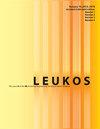Prime Color Wavelengths Improve Color Discrimination
IF 2.6
2区 工程技术
Q2 CONSTRUCTION & BUILDING TECHNOLOGY
引用次数: 1
Abstract
ABSTRACT Using comparative and iterative analyses of three-component spectral power distributions, this work demonstrates the advantage of locating radiation about the prime color wavelengths (near 450, 530, and 610 nm) over the anti-prime color wavelengths (near 490, 570, and 650 nm) for the purpose of maximizing color discrimination as measured by the Total Light Source Error Score, R d. To maximize color discrimination (minimize R d) most effectively in the design of a three-component spectrum, locate the primaries about the prime color wavelengths and increase their spectral width up to a full-width at half-maximum of 60 nm, at which R d is minimized. This work also details the internal logical consistency of quantifying color discrimination of a light source using R d, whereby the color discrimination ability of the daylight spectrum is set as ideal color discriminator meant to be replicated, not exceeded. Such internal logical consistency does not exist with quantifying color discrimination using gamut area, where is it demonstrably simple to exceed the performance of daylight (i.e., R g ≥ 100).原色波长改善颜色辨别
通过对三分量光谱功率分布的比较和迭代分析,本研究证明了定位主色波长(450、530和610 nm附近)的辐射优于定位反主色波长(490、570和650 nm附近)的辐射,从而通过总光源误差评分(Total Light Source Error Score)测量最大程度地分辨颜色。为了在三组分光谱的设计中最有效地最大化颜色辨别(最小化R d),在主要颜色波长附近定位原色,并将其光谱宽度增加到60 nm的半宽,在这个半宽处R d最小。这项工作还详细说明了使用R d量化光源辨色的内部逻辑一致性,其中日光光谱的辨色能力被设置为理想的辨色器,意味着可以复制,而不是超过。这种内在的逻辑一致性并不存在于使用色域面积来量化颜色辨别,在色域面积中,显然很容易超过日光的性能(即rg≥100)。
本文章由计算机程序翻译,如有差异,请以英文原文为准。
求助全文
约1分钟内获得全文
求助全文
来源期刊

Leukos
工程技术-光学
CiteScore
7.60
自引率
5.60%
发文量
19
审稿时长
>12 weeks
期刊介绍:
The Illuminating Engineering Society of North America and our publisher Taylor & Francis make every effort to ensure the accuracy of all the information (the "Content") contained in our publications. However, The Illuminating Engineering Society of North America and our publisher Taylor & Francis, our agents, and our licensors make no representations or warranties whatsoever as to the accuracy, completeness, or suitability for any purpose of the Content. Any opinions and views expressed in this publication are the opinions and views of the authors, and are not the views of or endorsed by The Illuminating Engineering Society of North America and our publisher Taylor & Francis. The accuracy of the Content should not be relied upon and should be independently verified with primary sources of information. The Illuminating Engineering Society of North America and our publisher Taylor & Francis shall not be liable for any losses, actions, claims, proceedings, demands, costs, expenses, damages, and other liabilities whatsoever or howsoever caused arising directly or indirectly in connection with, in relation to, or arising out of the use of the Content. Terms & Conditions of access and use can be found at http://www.tandfonline.com/page/terms-and-conditions .
 求助内容:
求助内容: 应助结果提醒方式:
应助结果提醒方式:


